Discover 11 hidden attractions, cool sights, and unusual things to do in Keswick (United Kingdom). Don't miss out on these must-see attractions: Keswick Pencil Museum, Aira Force, and Castlerigg Stone Circle. Also, be sure to include Derwent Island House in your itinerary.
Below, you can find the list of the most amazing places you should visit in Keswick (England).
Table of Contents
Keswick Pencil Museum
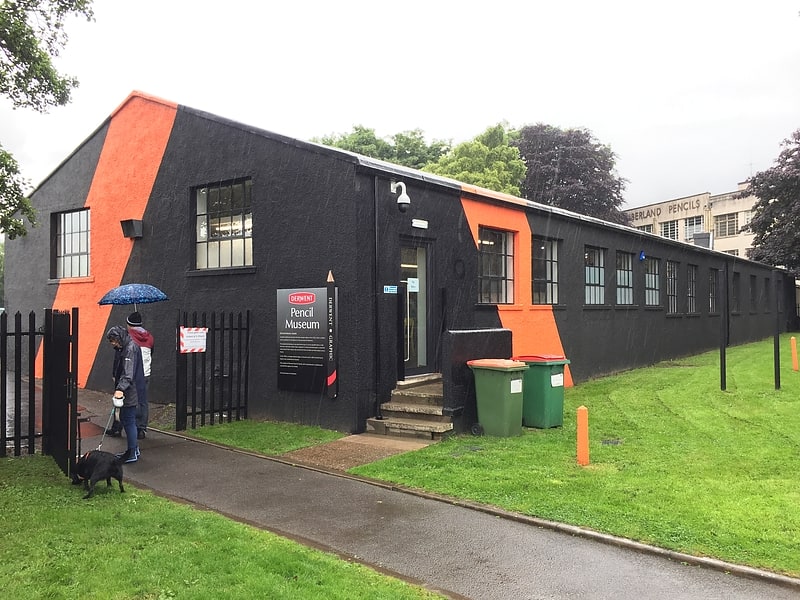
Museum in Keswick, England. The Derwent Pencil Museum is in Keswick, in the north-west of England.[1]
Address: Southey Works, CA12 5NG Keswick
Aira Force

Waterfall in England. Aira Force is a waterfall in the English Lake District, in the civil parish of Matterdale and the county of Cumbria. The site of the waterfall is owned by the National Trust.[2]
Address: 7ml S of Penrith, CA11 0JY Keswick
Castlerigg Stone Circle
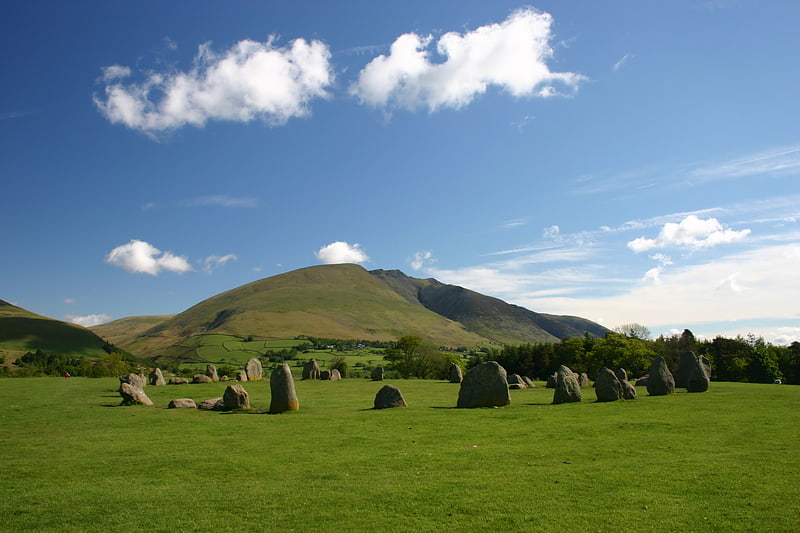
Atmospheric monument built around 3000BC. The stone circle at Castlerigg is situated near Keswick in Cumbria, North West England. One of around 1,300 stone circles in the British Isles and Brittany, it was constructed as a part of a megalithic tradition that lasted from 3,300 to 900 BC, during the Late Neolithic and Early Bronze Ages.
Various archaeologists have commented positively on the beauty and romance of the Castlerigg ring and its natural environment. In his study of the stone circles of Cumbria, archaeologist John Waterhouse commented that the site was "one of the most visually impressive prehistoric monuments in Britain."
Every year, thousands of tourists travel to the site, making it the most visited stone circle in Cumbria. This plateau forms the raised centre of a natural amphitheatre created by the surrounding fells and from within the circle it is possible to see some of the highest peaks in Cumbria: Helvellyn, Skiddaw, Grasmoor and Blencathra.[3]
Address: Castle Ln, CA1 2 4 Cumbria
Derwent Island House
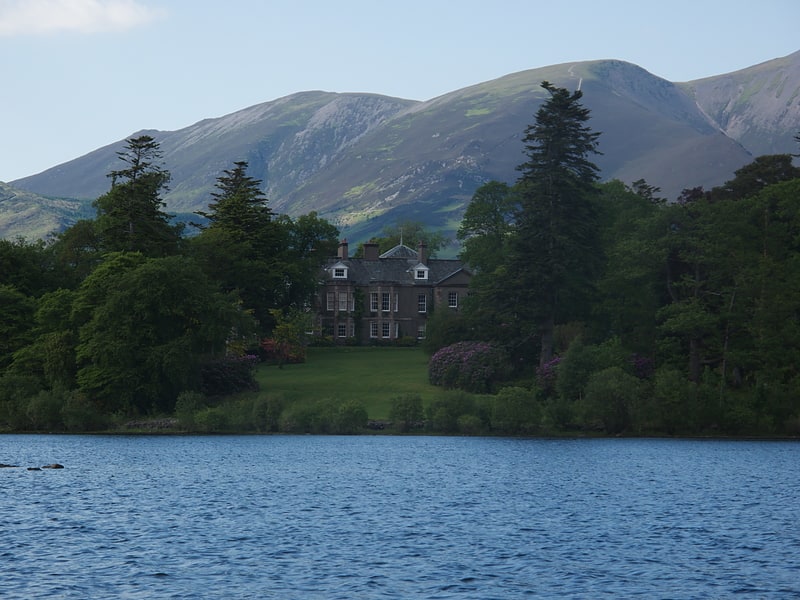
Derwent Island House is a Grade II listed 18th-century Italianate house situated on the seven-acre Derwent Island, Derwent Water, Keswick, Cumbria, and in the ownership of the National Trust. It is leased as a private home, but is open to the public five days a year. The interior is classical in style.[4]
Skiddaw
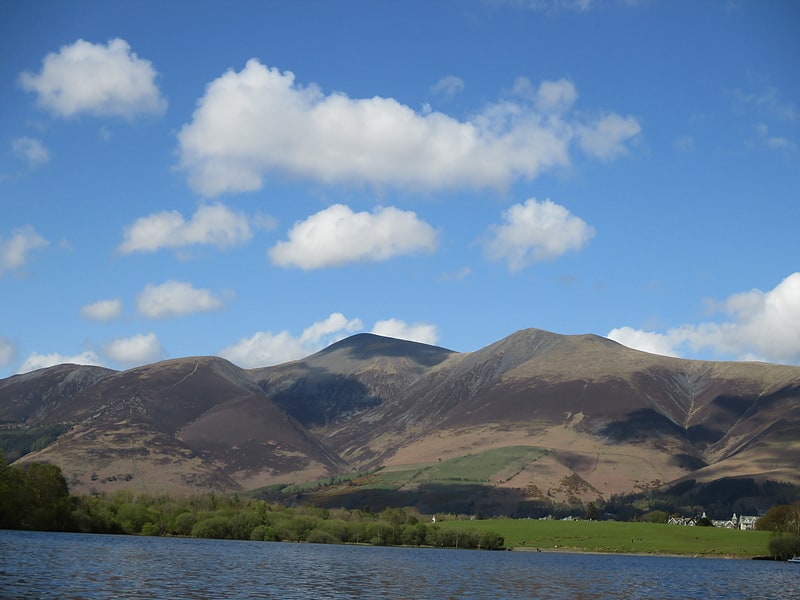
Mountain in England. Skiddaw is a mountain in the Lake District National Park in England. Its 931-metre summit is the sixth-highest in England. It lies just north of the town of Keswick, Cumbria, and dominates the skyline in this part of the northern lakes. It is the simplest of the Lake District mountains of this height to ascend and, as such, many walking guides recommend it to the occasional walker wishing to climb a mountain. This is the first summit of the fell running challenge known as the Bob Graham Round when undertaken in a clockwise direction.
The mountain lends its name to the surrounding areas of Skiddaw Forest and Back o' Skidda, and to the isolated Skiddaw House, situated to the east, formerly a shooting lodge and subsequently a youth hostel. It also provides the name for the slate derived from that region: Skiddaw slate. Skiddaw slate has been used to make tuned percussion musical instruments or lithophones, such as the Musical Stones of Skiddaw held at the Keswick Museum and Art Gallery.[5]
Theatre by the Lake
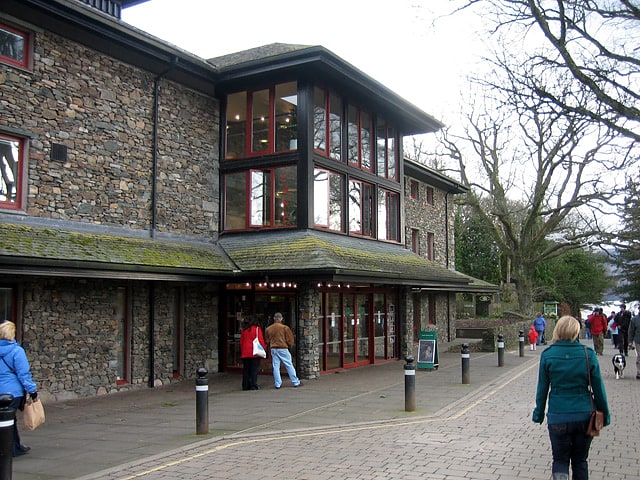
Theatre in Keswick, England. Theatre by the Lake is situated on the shores of Derwentwater in the Lake District in Keswick, Cumbria, England. It opened in 1999, replacing the mobile Century Theatre, and was made possible by an Arts Council Lottery Fund Grant. From May to November a resident company of up to 14 actors perform a Summer Season of six plays in repertory. The theatre also produces a Christmas show and two Spring shows. The theatre hosts festivals including the Words by the Water literature festival, the Jennings Keswick Jazz Festival, Keswick Film Festival and events in the Keswick Mountain Festival. In addition, the theatre offers a wide range of visiting drama, music, dance, talks, comedy and film.[6]
Address: Keswick, Lakeside
Ashness Bridge
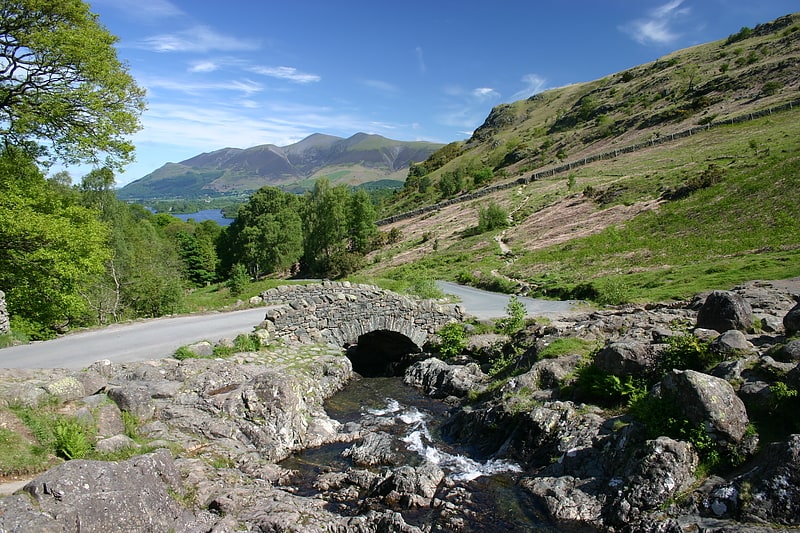
Bridge in England. Ashness Bridge is a traditional stone-built bridge on the single-track road from the Borrowdale road to Watendlath, in the English Lake District. It is at grid reference NY270196, and is famous for being a fine viewpoint across Borrowdale towards Skiddaw. It or its predecessor may have been a packhorse bridge conveying packhorse traffic from Watendlath to Keswick.
Near the bridge is a small cairn to Bob Graham, who ran a round of 42 Lakeland peaks in 1932 (in under 24 hours), a record which was not equalled for 28 years.[7]
Honister Slate Mine

Mine in England. The Honister Slate Mine in Cumbria is the last working slate mine in England. Quarrying for Westmorland green slate has been taking place in the area since 1728. Apart from the mining it is also a popular tourist attraction in the Lake District National Park.[8]
Address: Honister Pass, CA12 5XN Cumbria
Keswick Museum
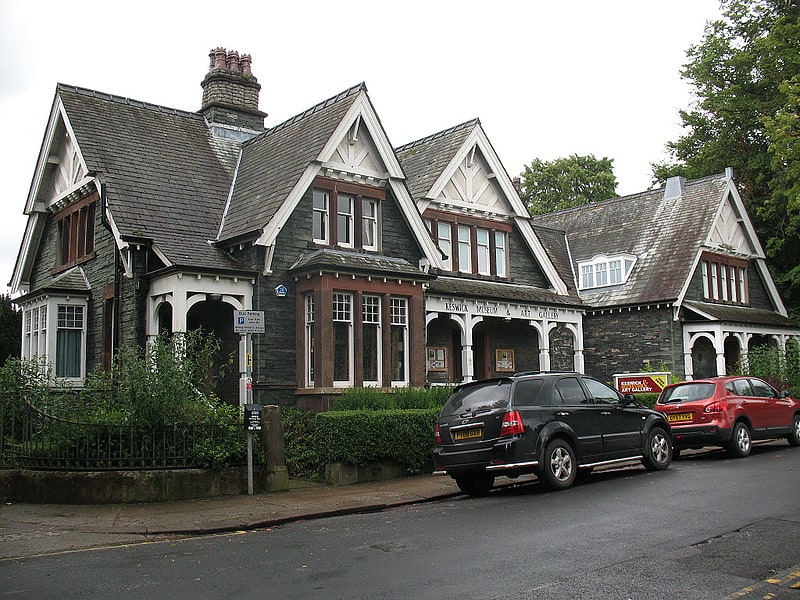
Museum in Keswick, England. Keswick Museum is a local museum based in Keswick in the English Lake District, which exhibits aspects of the landscape, history and culture of the area.[9]
Address: Station Road, CA12 4NF Keswick
Great Dodd
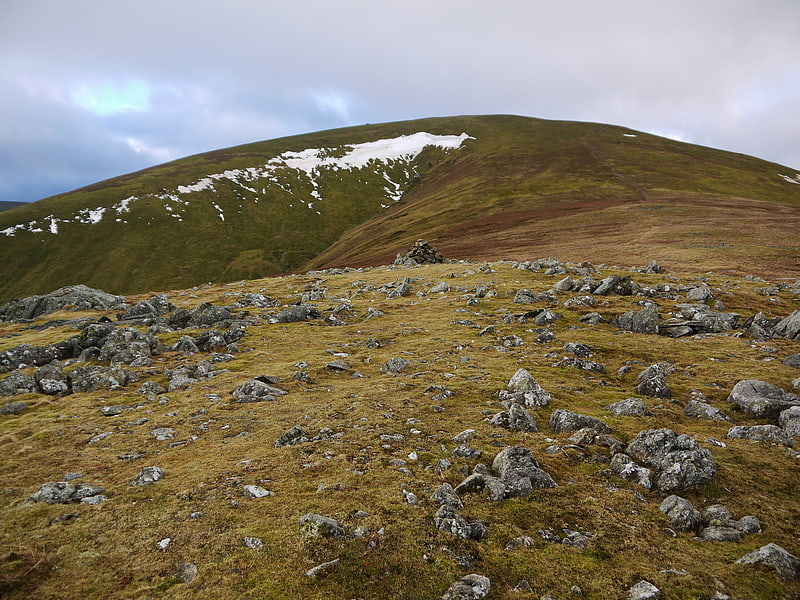
Mountain in England. Great Dodd is a mountain or fell in the English Lake District. It stands on the main ridge of the Helvellyn range, a line of mountains which runs in a north-south direction between the lakes of Thirlmere and Ullswater in the east of the Lake District. Great Dodd, with a height of 857 m is the highest of the fells in this range to the north of Sticks Pass.
Walkers may approach Great Dodd from either High Row near Dockray to the east, or from Legburthwaite to the west – or along the main ridge track from either north or south. Scramblers with climbing skills may be attracted to three gill climbs on the western side of the mountain.
The summit of Great Dodd is a smooth, grassy, rounded dome, like its two southern neighbours, Watson's Dodd and Stybarrow Dodd. Together, these three are sometimes called ‘The Three Dodds’. These three are made of volcanic rocks of the Borrowdale Volcanic Group, and the tops of all three are covered by the same sheet of rock, which was formed in a series of huge volcanic explosions accompanying the formation of a volcanic caldera about 450 million years ago.
Two attempts were made to mine mineral veins in the rocks of Great Dodd, but neither attempt was successful.[10]
Catbells
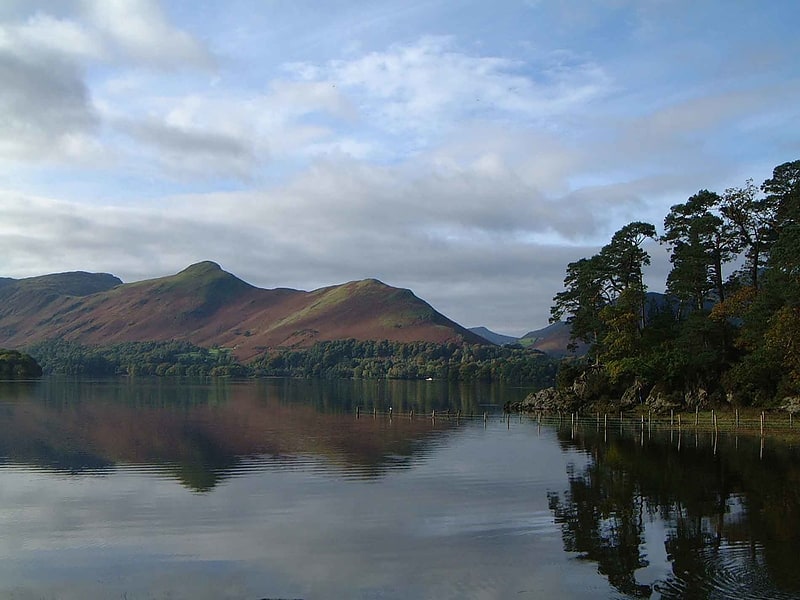
Fell in England. Cat Bells is a fell in the English Lake District in the county of Cumbria. It has a height of 451 metres and is one of the most popular fells in the area. It is situated on the western shore of Derwentwater within three miles of the busy tourist town of Keswick. Its distinctive shape catches the attention of many visitors to the Lakes who feel compelled to climb to the summit after seeing it from the viewpoint of Friars' Crag on the opposite side of Derwentwater. The Lake District writer and walker Alfred Wainwright acknowledges the popularity of Cat Bells among fellwalkers of all abilities by saying:
"It is one of the great favourites, a family fell where grandmothers and infants can climb the heights together, a place beloved. Its popularity is well deserved: its shapely topknott attracts the eye offering a steep but obviously simple scramble."[11]
Address: The Lake District, Keswick